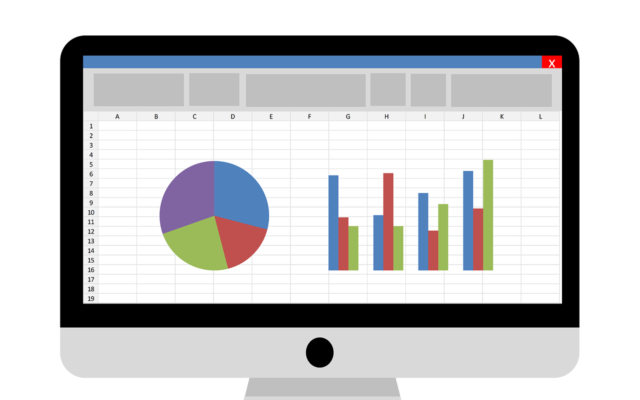The value of data-driven Customer Value Management or CVM cannot be underrated. Data and other algorithms/analytics that shape data are an imperative part of customer value management in a telecom company.
With enhanced customer expectations, it is up to the ability of telecom companies to provide customers with a seamless experience and to also ensure that they help boost revenue in the process.
To understand this concept in a more functional manner, I recently interviewed the chief of CVM at Mahindra Comviva, Amit Sanyal. With so much on hand to discuss, I got to the crux of the matter straightaway and asked Amit about the pillars he considered to be important for a customer value management program being driven by analytics.
The prodigy responded to my questions by commenting that all methods of CVM being driven by the force of analytics should be dedicated towards these three pillars.
- Analytics themselves have an important part to play, which is why they form the first pillar in this regard. Understanding consumer behavior is not child’s play, so it is indeed profitable for a telecom company if the analytics are spot on in their methodology.
- The second pillar pertaining to efficiency in this regard points towards context in analytics. Analytics should attend to a derived need of consumers, and should be able to determine the channel of communication understanding the customer’s ‘sense’ is key here.
- The third pillar is that of real time communication. While secondary data collection is of immense importance itself, real-time primary communication cannot be understated based on the role it plays in understanding customers. Real-time means ‘as good as it gets in time’ – there is no merit in expecting customers to remember and act on propositions if not presented right when it is relevant, and more importantly ‘useful’.
Amit also outlined that one of the key challenges facing telecom companies globally is a drop in revenue. The drop in revenue is because of numerous reasons that are making growth a very difficult option to undertake for all protagonists involved in the market. While all telecom operators are looking out for newer options in the form of fresh customers, it is imperative to note here that fresh customers are rarely found. Most geographies have network connections than the people living in it or very close to that, so there is a real shortfall of new customers coming in for new connections.
Other than the shortfall in garnering fresh customers, Amit also highlighted how the revenues from current customers were decreasing. These revenues have been decreasing steadily for a while now, due to the high amount of competition between the firms present. Most over the top or data content services are free. Margins have significantly dropped, since operators cannot risk selling at expensive rates considering how there are other operators selling at reduced rates.
The solution to this problem lies in reaching out to customers in a seamless manner. Since revenues in the market can only be increased through acquiring fresh customers or earning more revenue through current customers, reaching out to the customers and understanding their data is an inevitable outcome that needs to be followed.
Achieving Revenue
Since it has been mentioned above that there are limited fresh customers in the market, growth can only be achieved by bringing in customers from other operators. Simply put, you need to acquire customers from somewhere else to show your growth.
Besides bringing in new customers, you can also increase revenues from existing customers by understanding the economic concepts of elasticity and inelasticity. Operators need to know just what customers will be willing to spend their dollars on. Match the products and services they want with a price tag that gets customers to buy them.
Moreover, you can also increase the quality of your service. Subscribers tend to stay longer with an operator who offers quality. Not only will they stay longer, but they will also bring in new customers from other brands by telling them about the quality of your service.
To do all of this, you need to know just what the consumers are looking for. This is where the concept of machine learning and real time analytics come in. You should comprehend how your typical consumer behaves, and should also have a basic understanding of their preferences. You can use big data in the network systems, and implement methods such as predictive analytics and targeted communications to get the data that helps you understand them.
By understanding their behavior and their preferences through real time data visualization, you can know just what will be perfect for your customers. Implementation of this method could open doors to data-driven customer value management and machine learning. Some of the stats pointing in favor of these changes are:
- Organizations that had real time data visualization enjoyed an increase of 26 per cent in their new identified pipeline accounts.
- Organizations that had implemented real time data visualization saw an increase of 15 per cent in the cash generated through operational activities.
- Engaging with customers is not just a beneficial tool for getting to know them but can eventually increase revenues and profitability. It has been found that if you engage with your customers, you will be able to generate 40 per cent more revenue per customer.
- Your marketing expenditure on personalization will not go to waste as it has been found that the tactic can increase your return on investment or ROI up to 5-6 times.
- A negative customer experience is nothing less than a cardinal sin. It takes more than 12 positive experiences to negate one negative impression that the customer must have developed through an experience.
- 70 per cent of all purchases are based on how the customer feels that they are being treated by the organization.
- 67 per cent of all customers leaving your organization could be stopped if you resolve their issue during the first engagement.
- Increasing customer retention by 2 percent is as beneficial as reducing costs by 10 per cent.
Data-driven marketing is key for enhancing the customer experience. Data driven marketing can help connect data points and link them together to create a more actionable context. Cases that highlight this are:
- Customers don’t want to be told what to do. If a customer with a 4G phone is using 3G, they wouldn’t like the customer representative to tell them that they should switch to 4G. However, if the customer representative has sufficient data to see that they are using 3G since the last 3-4 months and also consumed most of the ‘data quota’ each month then he/she can recommend to them a 3G package with a higher band to increase satisfaction.
- Using favorite and maximum recharge denominations data to get an indication of average revenue per user (ARPU). Telecom companies should study consumer data and know how much more they can spend and then offer them a feasible plan. Someone with an ARPU of $5 should not be given a $2,000 plan, instead they should be shown a $10 plan with hopes that it is within their extent of purchase.
- All offers given to customers should be contextual. If a customer is spending time on international calls, then the offer given to them should be based on that and not driven by time.
The implementation of data-driven marketing calls for a mindset change in telecom operators. Operators need to understand what customers prefer, and then they should reach out to them on a personal level through data. “Everybody loves to talk about data science, it’s a cool thing – but only a few really move towards implementing it” said Amit before concluding the interview.
Article by channel:
Everything you need to know about Digital Transformation
The best articles, news and events direct to your inbox
Read more articles tagged: Featured










